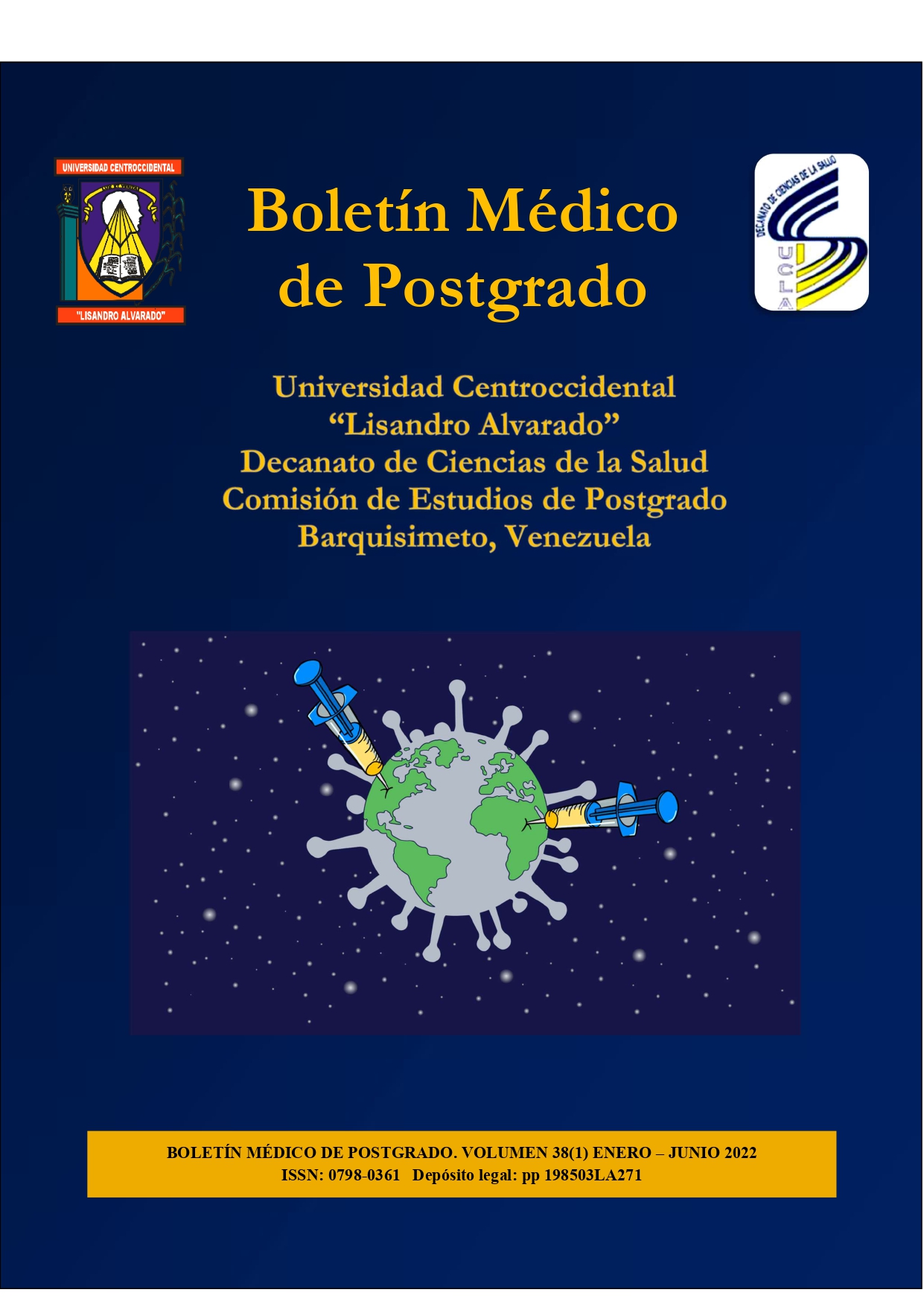Ultrasonographic doppler characterization of ophtalmic and uterine arteries in pregnant women with risk factors for preeclampsia
Keywords:
pregnancy, preeclampsia, Doppler, ophthalmic artery, uterine arteryAbstract
Preeclampsia is recognized as the most frequent medical complication related to pregnancy whose pathogenesis varies with different risk factors. Doppler velocimetry of the ophthalmic artery (DVOA) is an innovative study that evaluated in conjunction with the uterine arteries in the second trimester has proven to be a predictive test of high reproducibility. In order to determine the Doppler ultrasonography features of ophthalmic and uterine arteries in pregnant women with risk factors for preeclampsia, a descriptive cross-sectional investigation was carried out in 20 women between 18 and 24 weeks of pregnancy who attended the prenatal consultation of the Gynecology and Obstetrics Department of the Hospital Central Universitario Dr. Antonio Maria Pineda. Past history of prior preeclampsia is a risk factor for the development of subsequent preeclampsia observed in 50% of patients. 55% of pregnant women were overweight and 30% had obesity type I. Diastolic arterial pressure was high in 75% of patients. 65% of patients had high uterine artery mean pulsatility index and presence of Notch. The diastolic hump in ophthalmic artery was observed in 60% of the patients. It is concluded that DVOA may indicate intracranial maternal hemodynamic changes even when patients do not exhibit the classic features of preeclampsia.
Downloads
References
Magee L, Von Dadelszen P, Stones W, Mathai M. (2016). The FIGO textbook of pregnancy hypertension: An evidence-based guide to monitoring, prevention and management.
Romero J, Tena G, Jiménez S. Enfermedades hipertensivas del embarazo. En: Romero JF. Historia de la preeclampsia. México: Mc Graw Hill; 2009.
Pastore A. Ultrasonido en ginecología y obstetricia. 2ª. Ed. Rio de Janeiro: Editorial Amolca; 2012.
Gurgel J, Praciano de Sousa, P, Bezerra E, Kane S, da Silva Costa F. First trimester maternal ophthalmic artery Doppler analysis for prediction of pre-eclampsia. Ultrasound Obstet Gynecol 2014; 44(4): 411-8.
Gomez O, Figueras F, Fernandez S, Bennasar M, Martinez M, Puerto B, et al. Reference ranges for uterine artery mean pulsatility index at 11–41 weeks of gestation. Ultrasound Obstet Gynecol 2008; 32: 128–132.
Duckitt K, Harrington D. Risk factors for preeclampsia at antenatal booking: systematic of controlled studies. BMJ 2005; 330(7491): 565.
Milne F, Redman C, Walker J, Baker P, Bradley J, Cooper C, et al. The pre-clampsia community guideline (PRECOG): how to screen for and detect onset of pre-eclampsia in the community. BMJ 2005; 330: 576-80.
Contreras H, Espinosa D, Estremadoyro V. Variación gestacional de la preeclampsia. Hospital Nacional Arzobispo Loayza. Rev Per Ginecol Obstet 2003; 49: 95-102.
Oviedo J, Uribe L, Moreira W. Eco Doppler de la arteria oftálmica en pacientes con trastorno hipertensivo del embarazo. Rev Obstet Ginecol Venez 2016; 76(3): 188-195.
Diniz A, Moron A, dos Santos M, Sass N, Pires C, Debs C. Ophthalmic artery Doppler as a measure of severe pre-eclampsia. Int J Gynaecol Obstet 2008; 100(3): 216-220.
Published
How to Cite
Issue
Section

This work is licensed under a Creative Commons Attribution-NonCommercial-ShareAlike 4.0 International License.
Las opiniones expresadas por los autores no necesariamente reflejan la postura del editor de la publicación ni de la UCLA. Se autoriza la reproducción total o parcial de los textos aquí publicados, siempre y cuando se cite la fuente completa y la dirección electrónica de esta revista. Los autores(as) tienen el derecho de utilizar sus artículos para cualquier propósito siempre y cuando se realice sin fines de lucro. Los autores(as) pueden publicar en internet o cualquier otro medio la versión final aprobada de su trabajo, luego que esta ha sido publicada en esta revista.



